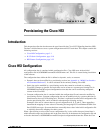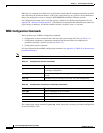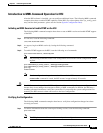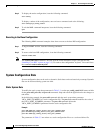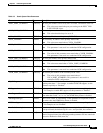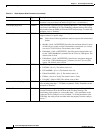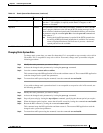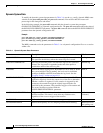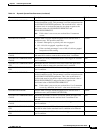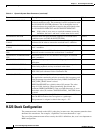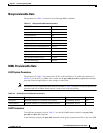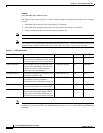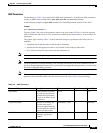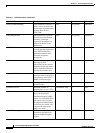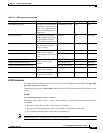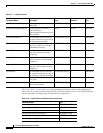
3-4
Cisco H.323 Signaling Interface User Guide
OL-4806-01 Rev. A14
Chapter 3 Provisioning the Cisco HSI
Cisco HSI Configuration
Step 2 To display the entire configuration, issue the following command:
rtrv-config
To display a subset of the configuration, one can issue a command such as the following:
rtrv-config:sys_config_static
Step 3 To exit the MML command interpreter, issue the following command:
quit
Reverting to the Base Configuration
The following MML command examples show how to revert to the base HSI configuration:
Step 1 To begin an MML session, issue the following command:
mml
Step 2 To revert to the base HSI configuration, issue the following command:
restart-softw:init
Note The restart-softw:init command is derived from the initial installation script. (See Step 6 in the
“Installing Cisco HSI” section on page 2-5.) To return to the configuration “myconf,” one would issue
the command restart-softw:myconf.
System Configuration Data
System configuration data can be static or dynamic. Static data can be activated only at startup. Dynamic
data can be activated during system run time.
Static System Data
To modify the static system data parameters in Table 3-3, use the sys_config_static MML name variable
for the prov-add, prov-dlt, and prov-ed commands. Stop and restart the application for the changes to
take effect.
In the following example, the prov-add command adds the static system data parameter
VSCA_PORT_NUMBER1 to a static configuration file. The prov-ed command modifies the value of
the VSCA_PORT_NUMBER1 parameter. The prov-dlt command deletes the
VSCA_PORT_NUMBER1 parameter from the static configuration file.
Example
prov-add:name=sys_config_static,vsca_port_number1=8003
prov-ed:name=sys_config_static,vsca_port_number1=8002
prov-dlt:name=sys_config_static,vsca_port_number1
The parameters in Table 3-3 are written to a static configuration file or to a section within a file.



